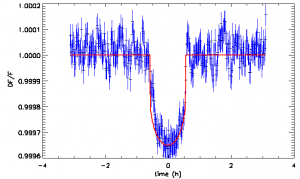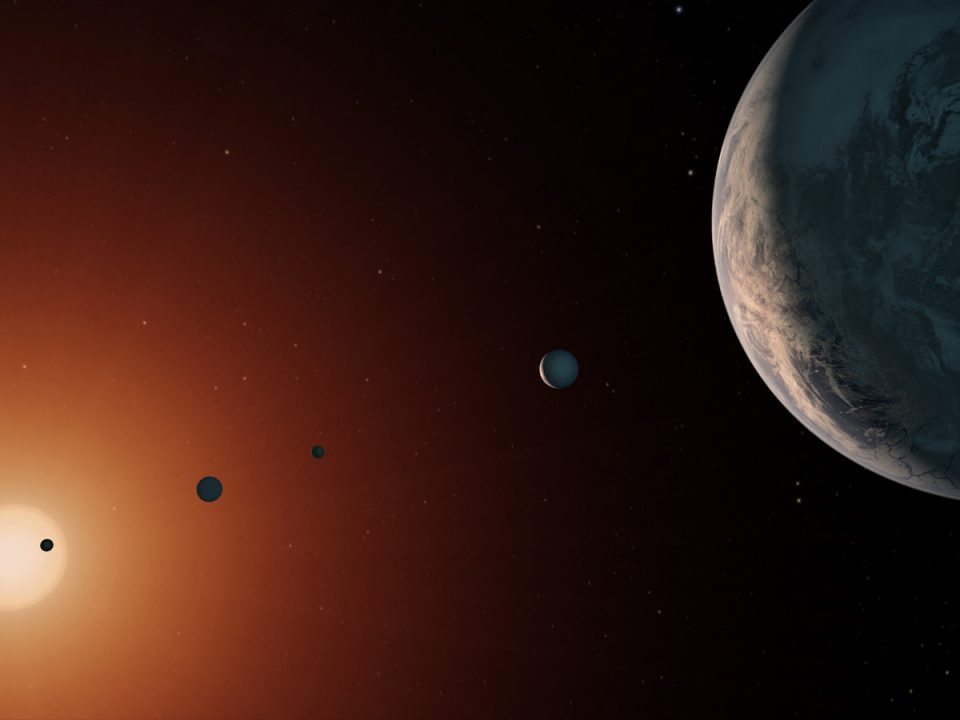Discovery of a Super-Earth?
Visit at the Big Island- Keck Observatory and Mauna Kea
February 1, 2009about the star of the COROT super-Earth
February 4, 2009Great news today! A. Leger from the Institut d’Astrophysique Spatiale (IAS) and his collaborators announced the discovery of the smaller super-Earth called CoRoT-Exo-7b. This discovery was made possible using the space satellite COROT designed by the CNES (the French spatial agency) which monitors the luminosity of hundred of stars using a wide-field of view camera.
We know 336 exoplanets (planets orbiting around other stars) so why this discovery deserves a special attention and needs to be mentioned my blog? Well this one is different. its diameter is less than twice the one of our planet and it orbits around its star once every 20 hours, meaning that it is very close to its star, thus its temperature on the surface must be high (estimated to 1200 deg C). Most of discoveries of exoplanets so far were made using radial velocity measurements, meaning that the method is sensitive to massive so gas giant planets (Jupiter, Saturn, Neptune or Uranus) orbiting close to their star.

Light curve, revealing the transit of the exo-planet in front of its star (from Obs Paris-Meudon Press-release)
Using transit method, astronomers are able to measure accurately the size of a planet. Space telescopes, located above the distorted Earth atmosphere, improves significantly the accuracy of the photometric measurements. Astronomers were able to measure the dimming of the light due to even smaller planets. CoRoT-Exo-7b occults its star producing a drop of 0.04% the total luminosity for instance, corresponding to a radius of 1.75 Earth eadius.
Additional observations were taken to better constrain the exoplanet chracteristics using extensive European telescope network operated by various institutes and countries. The European Southern Observatory at Paranal and La Silla (Chile), several telescopes at the Canary Islands Astrophysics Institute, and the Canada-France-Hawaii Telescope on Mauna Kea, Hawaii. Using HARPS, a sensitive spectrometer on the 3.6m telescope at ESO-La Silla, they estimated the mass of the exoplanet to be 3-6 Earth Mass.
Using the mass and the size measurements, we can calculate the density which is quite high (between 3-6 g/cm3) and comparable to the mean density of Earth (5.5 g/cm3) or Mars (3.9 g/cm3). CoRoT-Exo-7b could be then the first terrestrial exo-planet (or super-Earth) ever discovered!
This major finding clearly deserves to be confirmed and could lead to further studies. A referee paper was submitted to Astronomy and Astrophysics. I will definitely have a look on it and let you know more in a few weeks.
In a few weeks, NASA will launch the Kepler spacecraft which will use the same strategy to detect exo-planets but should be more sensitive leading to the possibility of detecting more “super-Earth” orbiting around nearby stars.
we just have to wait to “see” more of these exotic worlds,
Franck M.
[Correction: After discussion with D. Rouan, co-author of the paper, the press-release from INSU/CNRS is flawed, and the mass of the exo-planet is _less_ than 11 x MEarth, putting a larger range of value for the density (0-11 g/cm3). So the conclusion of the discovery of a Super-Earth is a bit too soon to be drawn. My apologize for that.]



3 Comments
[…] I wrote a post and an update about the possible discovery of a super-Earth exo-planet by COROT mission. I […]
Awesome job on the site, I recently happened to come across this site thru yahoo, this one is going in favorites ;P
le boin coin looks like a perfect way.